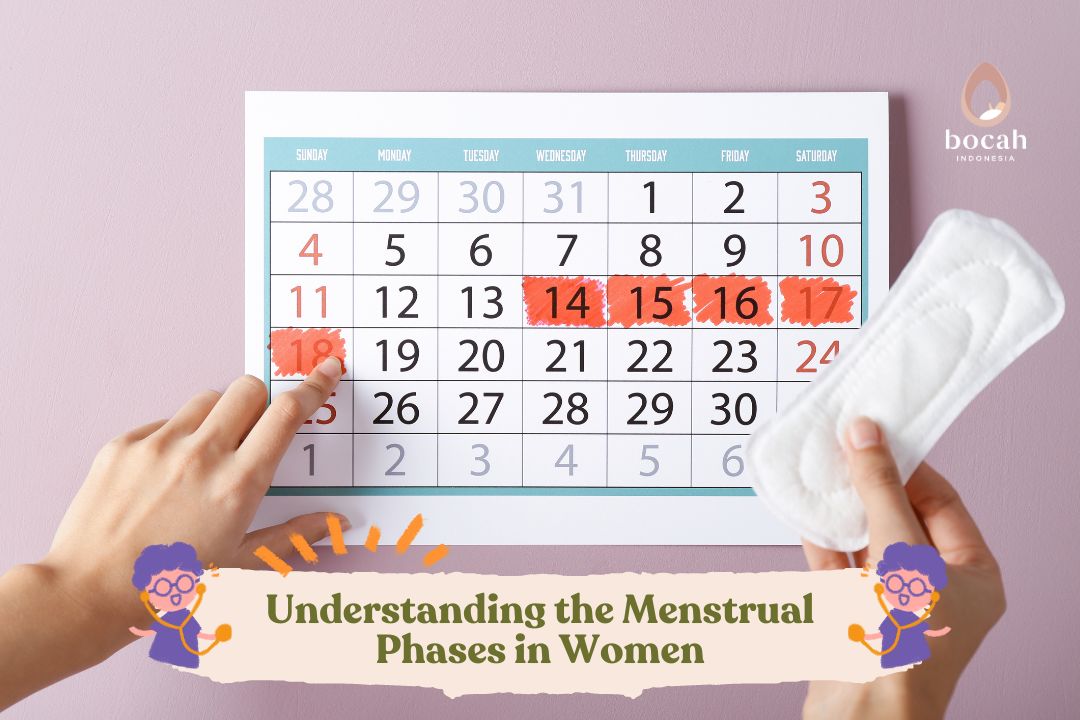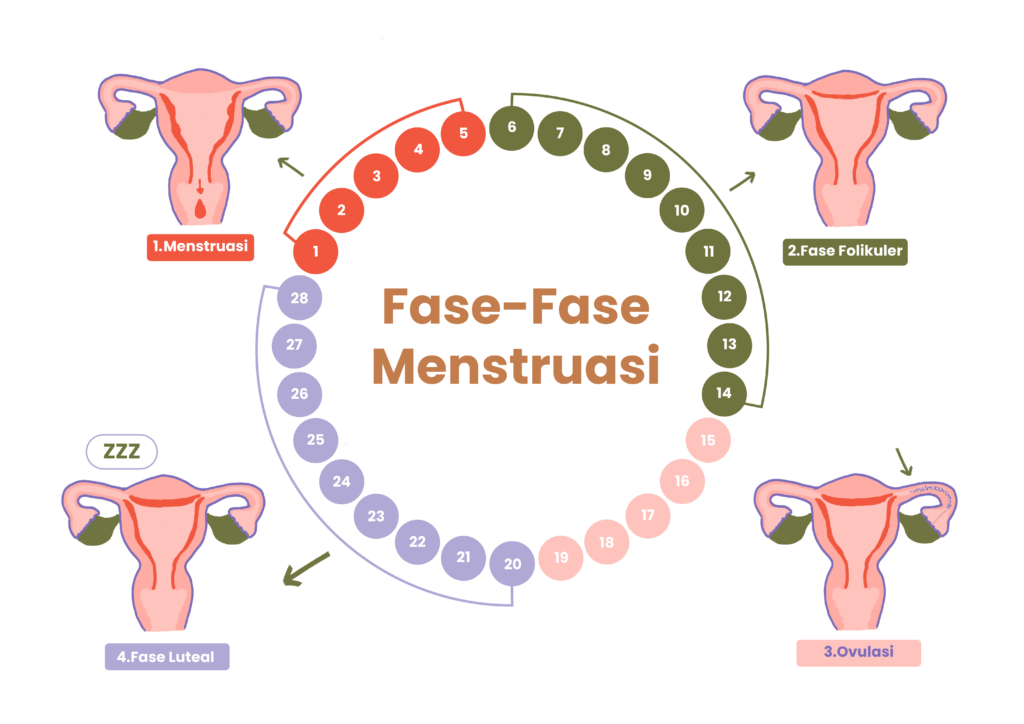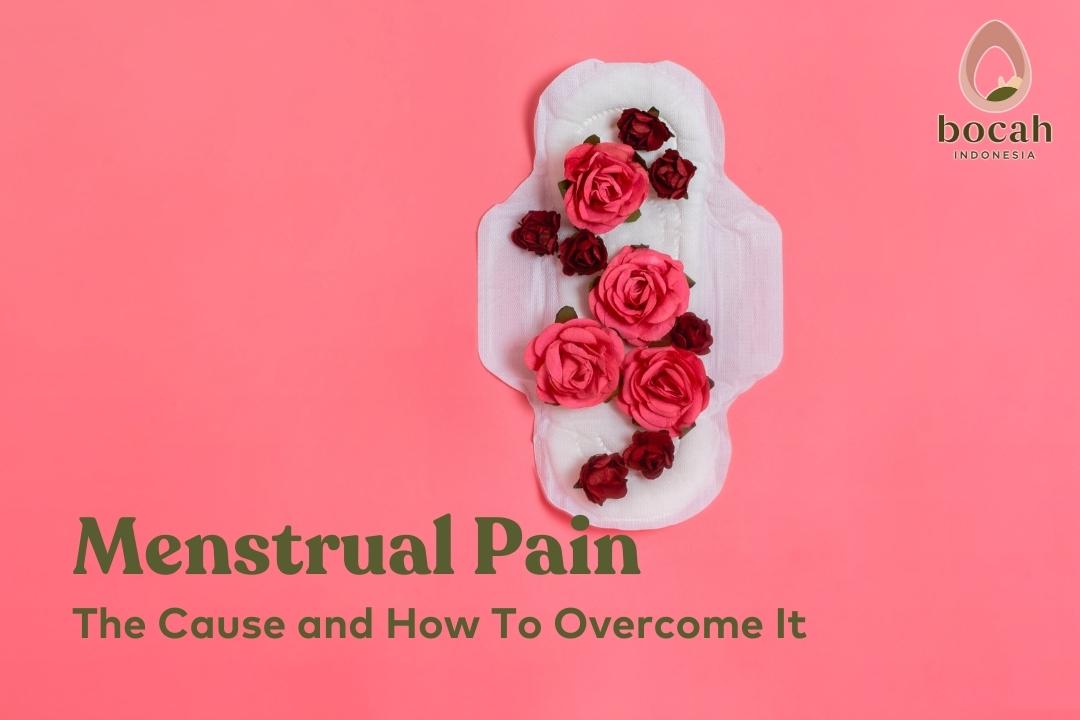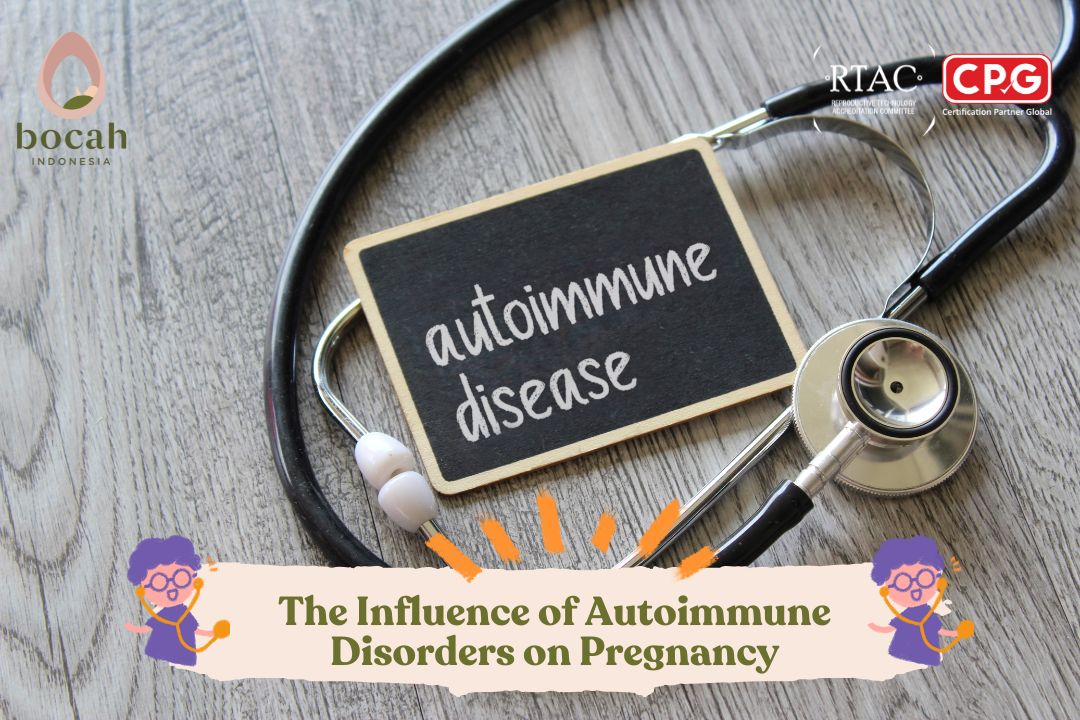Understanding the Menstrual Phases in Women, Don’t Forget the Fourth One

The menstrual cycle is a natural monthly process that prepares a woman’s body for potential pregnancy.
You may think that the menstrual cycle only refers to the days when a woman is experiencing menstrual bleeding. In fact, the menstrual cycle consists of four phases, all of which work together to prepare a woman’s body for the possibility of pregnancy.
What is the menstrual cycle?
The menstrual cycle is a series of complex events that naturally occur. It involves changes in hormone levels, the uterine lining, and ovarian follicles, all working to prepare a woman’s body for the possibility of pregnancy. If pregnancy does not occur, menstrual blood is released. The length of the menstrual cycle can vary for each individual, but it typically lasts around 28-30 days, with a normal range of 21-35 days.
A woman’s first period is called menarche. The average age of menarche is 12-13 years, but it can begin as early as 9 years old and as late as 16 years old. It is normal for the early menstrual cycles to be irregular. Over time, the menstrual cycle becomes more regular and follows a pattern. The cycle will then continue monthly until menopause, which marks the end of menstruation, occurring when a woman reaches her 50s.
Phases of the Menstrual Cycle
There are four main phases in the menstrual cycle.
1. Menstruation
Menstruation, or the menstrual period, is when a woman experiences her monthly period. During menstruation, the uterine lining sheds and appears as blood that exits through the vagina.
Tanya Mincah tentang Promil?
Menstrual blood contains blood cells, mucus, and cells from the uterine lining. Menstruation occurs once a month and lasts for 3-7 days. The first day of menstruation marks the start of a new menstrual cycle.
Some common symptoms before and during the first few days of menstruation include:
- Abdominal cramps
- Bloating
- Breast tenderness
- Headaches
- Mood changes
- Irritability
- Fatigue
- Lower back pain
2. Follicular Phase
The follicular phase is the longest phase in the menstrual cycle. It begins on the first day of a woman’s period and lasts around 7 to 21 days until ovulation. On average, the follicular phase lasts around 14-16 days.
During this phase, the brain releases follicle-stimulating hormone (FSH), which helps eggs develop and mature within the ovarian follicles. Out of all these eggs, only one will be selected, growing larger, maturing, and releasing more estrogen. This estrogen thickens the uterine lining, preparing it for a possible pregnancy.
3. Ovulation
Ovulation is the phase when a matured egg is released from the ovarian follicle and moves along the fallopian tube towards the uterus. This phase occurs in the middle of the menstrual cycle, between days 14 and 16 in a 28-day cycle, and lasts approximately 12 to 24 hours.
During ovulation, the body releases luteinizing hormone (LH). This hormone signals the matured egg that it is time to be released from the ovarian follicle. Once released, the egg travels to the fallopian tube, where it may be fertilized by a sperm cell. If fertilized, the resulting embryo will move towards the uterus and implant itself in the uterine lining, marking the beginning of pregnancy. If the egg is not fertilized, the thickened uterine lining will shed, and menstruation occurs.
Some signs that a woman is ovulating include:
- A slight increase in basal body temperature
- Clear and elastic cervical mucus discharge
- Increased sexual desire
- Breast tenderness
- Mild cramping in the lower abdomen
Ovulation and Pregnancy
A woman is most likely to conceive within the 2 days before ovulation and 3 days after ovulation, a period known as the fertile window. However, it is important to note that pregnancy can still occur at any time during the menstrual cycle because a woman’s ovulation timing can vary each month, and sperm can survive in the female body for up to five days.
Luteal Phase
The luteal phase begins after ovulation and lasts until the start of the next menstrual cycle. During this phase, a special structure or cyst called the corpus luteum forms in the ovary. This cyst releases the hormone progesterone and a small amount of estrogen, aiming to prepare the uterus for a potential pregnancy. This process thickens the uterine lining, making it ready to nourish the embryo if the egg is fertilized and implants. If the fertilized egg implants, the corpus luteum continues to produce progesterone, maintaining the thickness of the uterine lining until the placenta forms.
If pregnancy does not occur, the corpus luteum degenerates, and progesterone levels drop. This signals the body to shed the thickened uterine lining, and a new menstrual cycle begins.
Women may experience premenstrual syndrome (PMS) symptoms, such as:
- Bloating
- Breast pain or tenderness
- Mood changes
- Headaches
- Weight gain
- Food cravings
- Changes in sexual desire
- Trouble sleeping

The Importance of Tracking the Menstrual Cycle
Every woman’s menstrual cycle is different. Some women experience menstruation on the same day each month, while others have irregular cycles. Some women may experience heavier or longer menstrual bleeding compared to others. Additionally, the menstrual cycle can change at certain times, such as becoming less frequent and irregular as women approach menopause.
One effective way to determine if a woman’s menstrual cycle is problematic is by tracking the monthly cycle. You can use a period tracking app, a calendar, or a journal. Taking the time to monitor your menstrual cycle can provide valuable insights into your reproductive health and general body condition.
Here are some reasons why it is important to track the menstrual cycle:
- Predict when the next period will occur.
- Understand your body and recognize changes in menstrual patterns. Tracking and monitoring the menstrual cycle can help you plan activities, self-care, and exercise at the most suitable times. Additionally, you can detect any irregularities or changes that may require attention, such as:
- Missed or completely stopped periods.
- Irregular menstruation.
- Bleeding lasting more than 7 days.
- Menstruation occurring less than 21 days or more than 35 days apart.
- Heavy bleeding between periods (more than spotting).
- Unusual abdominal pain during menstruation.
- Identify fertile days. Whether you want to conceive or avoid pregnancy, tracking the menstrual cycle can help identify the most fertile days.
- Manage premenstrual syndrome (PMS). The days leading up to menstruation may be an emotional time. By tracking the menstrual cycle, you can anticipate mood changes, abdominal cramps, and other symptoms, allowing you to plan and take better care of yourself.
Conclusion
Since no two women have exactly the same menstrual cycle, what is normal for one woman may not be the same for another. Therefore, it is crucial to understand your menstrual cycle, including its timing and duration. Be aware of any changes in these menstrual phases and consult a doctor if necessary.
Source:
- American College of Obstetricians and Gynecologists. Last updated January 2022. The Menstrual Cycle: Menstruation, Ovulation, and How Pregnancy Occurs. URL: The Menstrual Cycle: Menstruation, Ovulation, and How Pregnancy Occurs | ACOG.
- Better Health Channel. Menstrual cycle. URL: https://www.betterhealth.vic.gov.au/health/conditionsandtreatments/menstrual-cycle.
- Kini S. Basic Physiology of Menstrual Cycle and Ovulation. In: Bitzer J, Mahmood TA, editors. Handbook of Contraception and Sexual Reproductive Healthcare. Cambridge: Cambridge University Press; 2022. p. 1–10. URL: https://www.cambridge.org/core/books/handbook-of-contraception-and-sexual-reproductive-healthcare/basic-physiology-of-menstrual-cycle-and-ovulation/BB2379558C5BEC6852505EA05842BC66.
- Moreland OB-GYN. Understanding the Four Phases of the Menstrual Cycle. URL: https://www.morelandobgyn.com/blog/4-phases-of-the-menstrual-cycle.
- Thiyagarajan DK, Basit H, Jeanmonod R. Physiology, Menstrual Cycle. [Updated 2022 Oct 24]. In: StatPearls [Internet]. Treasure Island (FL): StatPearls Publishing; 2024 Jan-. URL: https://www.ncbi.nlm.nih.gov/books/NBK500020/.










